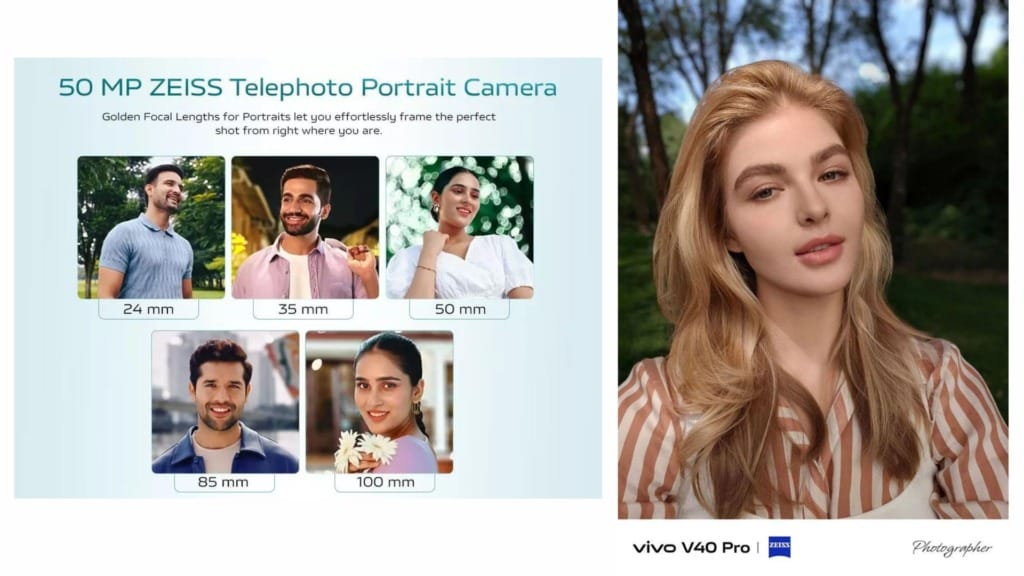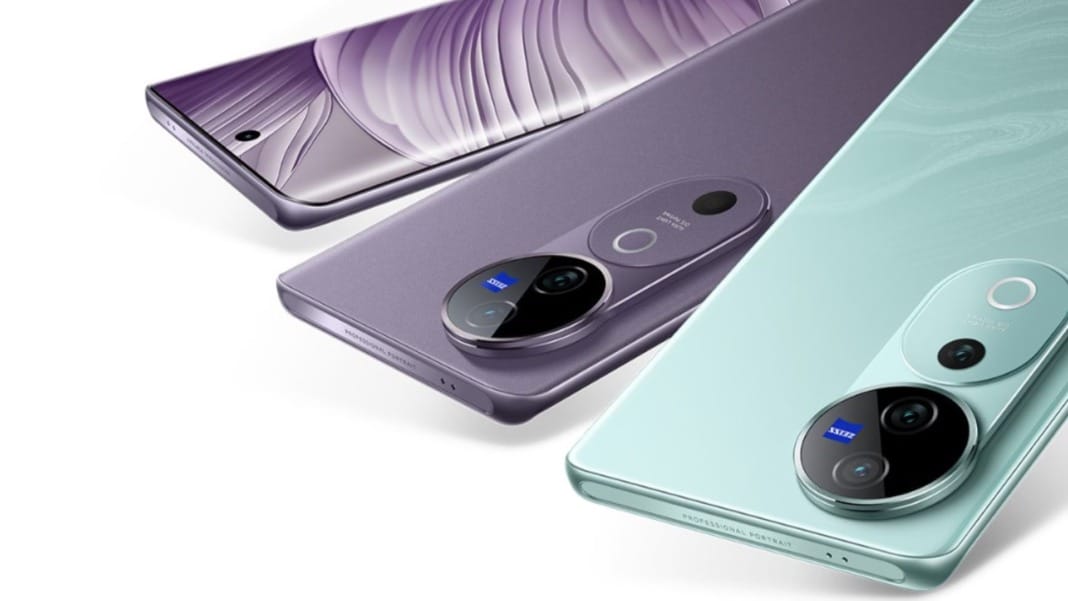Vivo has unveiled its latest update to the midrange V-series smartphones with the Vivo V40 and Vivo V40 Pro launch. The Zeiss branding on its camera and imaging system is a notable addition to this lineup.
A collaboration that enhances midrange phones
Since 2020, Vivo and Zeiss have been collaborating, similar to other major Chinese smartphone brands partnering with renowned optics and camera companies, like Xiaomi and OPPO, and even photography houses like Honor. These collaborations typically appear on flagship products, so it’s surprising to see Zeiss optics featured in the midrange V40 series.
Advanced Zeiss-powered portrait photography
The Vivo V40 and V40 Pro are equipped with a 50MP Zeiss OIS main camera. The V40 Pro uses the Sony IMX921 sensor, while the V40 employs the Samsung ISOCELL GNJ sensor. According to Vivo’s data, both offer an f/1.88 aperture and Optical Image Stabilisation (OIS), allowing for 2.8 times more light intake than non-OIS cameras.
The V40 Pro also boasts a 50MP Zeiss telephoto camera (Sony IMX816) with 2x optical zoom and support for 50x Zeiss-branded digital zoom. Additionally, it features a 50MP ultra-wide camera with an f/2.0 aperture, autofocus tracking, and a 119° field of view (FOV). Thanks to a combination of optical focus and Zeiss enhancements, these features provide 35mm-equivalent focal lengths of 24mm, 35mm, 50mm, 85mm, and 100mm.

In contrast, the V40 lacks a telephoto camera and offers focal lengths of 24mm, 35mm, and 50mm. However, it shares the same ultrawide camera found on the Pro version. These focal lengths are complemented by Zeiss Style Bokeh effects, which enhance portrait photography.
Like its predecessor, the V40 series retains the ample LED fill light, now called AI Aura Light Portrait. This feature is smaller but more focused, providing three times brighter at 2x zoom and 50 times softer light than a regular flash. Vivo has also improved the dimming technology, allowing AI Aura Light Portrait to deliver well-lit faces even at 4x zoom.
Moreover, the phones feature AI 3D Studio Lighting, which uses algorithms and recognition analysis to add natural fill light in poor lighting conditions. This software-powered enhancement also supports Festival Portrait Style, recreating a festive feel in photos using two distinct Look-Up Tables (LUTs).
Impressive hardware features
Both models in the V40 series have a 5,500mAh battery that supports 80W wired fast charging. The MediaTek Dimensity 9200+ processor powers the V40 Pro variant, while the regular V40 relies on the Qualcomm Snapdragon 7 Gen 3. Despite these differences, both models support 12GB of hardware RAM and an additional 12GB of virtualised RAM.
The V40 and V40 Pro both offer a 120Hz refresh rate, a 1.5K resolution AMOLED 3D curved panel with a peak brightness of 4,500 nits, and dual stereo speakers.
Vivo has maintained the V-series’ reputation for lightweight and aesthetically pleasing designs. Both models feature a Flourite AG shimmer rear, a thickness of 7.58mm, and a Gemini Ring Design for the camera island and housing. The Vivo V40 and V40 Pro are officially available in India, one of the first markets outside China to receive them.





